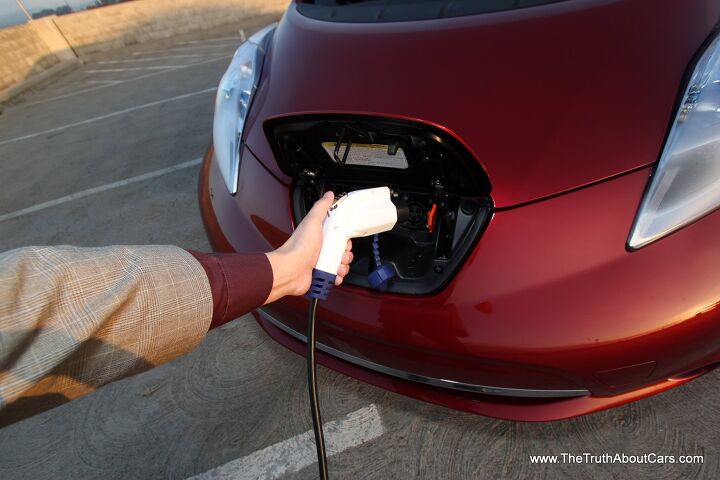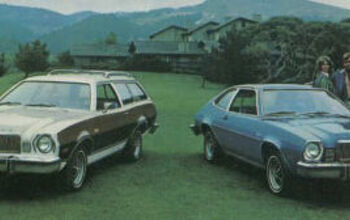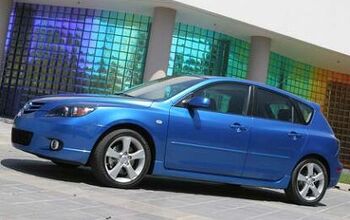The Truth About Battery Life

The drama circling around the New York Times test of the Tesla Model S doesn’t surprise me one bit. Why? Because I understand, perhaps at a deeper level than most of the motoring press, how batteries work. Perhaps that has to do with growing up in a family of engineers and scientists, but battery technology has always interested me. So when people from Phoenix came to me crying in their soup about their LEAFs in the heat and friends started wagging fingers at Tesla and the New York Times, I figured it was time for a battery reality check.
What’s the problem (this time)?
Consumer Reports says their Tesla’s power gauge dropped to “zero” at the 173-mile mark on a 176-mile trip. At the beginning of the trip the range indicator said 240 miles while the “projected range” indicator which takes driving style into account said 188 miles. On first glance this sounds like some horrific range issue. “OMG, the Model S missed its 240 mile range by 64 miles.” But did it?
What was the problem last time?
If you didn’t know about the Tesla / New York Times punch up, then click here for the article that started it all. (And a picture of a Tesla on a flatbed.) Basically John Broder took a Tesla out on the road for a long road trip and ran out of juice. Of course he also didn’t charge the battery fully at every opportunity he had, but that’s beside the point for the moment.
About those journalists
Our readers are no doubt familiar with Jack Baruth’s assertion that the vast majority of auto journalists are less than professional drivers. The same applies in this case, the majority of journalists know rather little about EVs, how they work, what’s going on in the battery pack and why it matters. Much like a novice on the track, a novice in an EV can result in unpredictable results.
How batteries work
Batteries are a means of storing electricity chemically. The fact that we’re talking about a chemical reaction is absolutely vital to keep in mind when anyone starts talking about range, battery degradation, heat, cold, charging, etc.
All batteries have three basic components: a cathode, an anode and an electrolyte between the two. Depending on what materials are used for each of these three components battery life, cost and power density will vary. At the low-end of the scale we have the zinc-potato-copper battery from school and at the high-end of consumer electronics we have the lithium iron phosphate-dimethyl carbonate-graphite battery known as the Lithium-ion battery, or the battery that powers modern cell phones, laptops, electric cars and is even used in the new Boeing 787. (Yea, the one getting the bad press.)
Every battery chemistry has its advantages and disadvantages. Lead-acid batteries (the one that starts your car) are heavy, cheap and can handle the high current draw of starter motors. Ni-Cad batteries that were popular in my child hood were relatively easy to manufacture and lower cost than other alternatives. Nickel-metal hydride batteries have been around for some time and thanks to their stability and energy density have been used in hybrid vehicles since the Prius and Insight. Lithium based batteries are the current star in the consumer electronics world because their power density and ability to charge rapidly are excellent for smartphones, tablets and laptops. The problem is Lithium batteries can be more “temperamental” than some of the older chemistries. If you want to know all there is to know about Lithium-ion batteries, click on over to Batteryuniversity.com.
What does this have to do with the cold?
Because batteries store energy chemically, a chemical reaction has to occur when charging and when discharging. When batteries get cold, the internal resistance of the battery increases which decreases the amount of energy that you can get out of the pack. You can test this at home yourself if you have a camera flash at home. Drop the batteries into the freezer, put them in the flash and see how long it takes to recharge the flash. What does this mean in a car? Well, you are charging outside and it’s near freezing, then (A) you won’t be able to completely charge a battery and (B) after charging if the battery cools off to ambient you won’t be able to use a portion of those electrons you just stuffed in the battery. Think about your 12V car battery, remember that cranking amps vs cold cranking amps rating? Same thing.
To fix these problems many EVs (like the Model S) heat the battery to try to keep it at an optimum temperature. Doing so ensures that you can use the entire capacity for charging and discharging, but it of course consumes power, and the colder it is, the more power it takes to heat the battery. In hot weather the system cools the battery to preserve the lifetime of the battery chemistry.
What are the factors that decrease battery life?
There are many factors involved, but put simply, having your battery at a very low state of charge or a very high state of charge has a negative impact on battery life. The rate at which you take the battery from charged to discharged or discharged to charged also has an impact. While cold temperatures may keep you from getting the most out of your battery, it usually doesn’t impact longevity. Heat on the other hand has a severe impact on battery life and it gets worse the higher the state of charge.
Back to Consumer Reports
Without access to Elon’s creepy data logs of the CR test vehicle, I have two suggestions to what was going on. First off, the car was fairly close to reality with the projected range of 188 miles, but this needs explanation and education. The car was saying that if you drive gently the maximum range is 240. Drive it like you’ve been driving it, expect 188. Now we insert the cold weather into the mix. I assume he was heating the cabin on a chilly day and driving like normal. What wasn’t obvious is that the Model S may very well have also had the battery heater turned on, if so, there’s your 12 miles. Even if that wasn’t the case, any gasoline car that gets the range estimate within 7% scores in my book.
What about those LEAFs in Phoenix?
A while back I got a frantic call from a friend in the Phoenix area. “My LEAF’s batteries are dead!” So for the next 15 minutes he poured his heart out about the problem. Towards the end the usual comments from a person dealing with “automotive loss” came out “Nissan needs to give me a new battery.” After all his woes had been aired he asked me what I thought. I paused for a moment and said (as nicely as possible) “I’m not sure what your problem is. What you are describing to me is normal battery wear and tear.”
You see, unlike the Model S, the LEAF does not have an active cooling system for the battery pack. (This was done to save money and with the LEAF now dropping to $28,800 (less than half the Model S), you get what you pay for.) The lack of active cooling means that in the hot Arizona desert, parked in the sun at work or at the mall your battery is slowly dying. Why? It’s all back to the chemistry again. The optimum service life of Lithium-ion batteries is achieved when the cell is a constant 68 degrees Fahrenheit. Baking in the sun for 8 hours a day while you’re at the office the inside of the car can easily go over 170 degrees when it’s 115 outside. Since he had to charge his car at the office in order to get back home, he was compounding the problem since batteries get hot as they charge. As the battery aged because of the long commute he started to drop by the local DC quick charge station. This made the battery age even faster because now the battery is hot and you are rapidly going from one state of charge to the other. Net result: 20% loss in capacity over 2 years and 33,000 miles. Case closed.
What about my Prius? (or other hybrids)
Right now the Prius, and most older hybrids like the Escape Hybrid and the first generation Fusion Hybrid use Nickel-Metal Hydride (NiMH) batteries. This chemistry is more stable but less power dense than lithium based batteries. In addition remember what I said about battery life? State of charge and charge/discharge rates are large factors. Hybrids extend their battery life deliberately by never fully charging nor fully discharging their batteries. In fact most non-plug-in hybrids use 60-70% of the rated capacity in the battery. Since they don’t depend on the battery for 100% of the propulsion like an EV does, charge and discharge rates are lower which also extends battery life. And lastly, it’s less obvious when your hybrid’s battery does age because it’s not your only source of propulsion. As hybrids move to lithium batteries they are retaining these life extending measures, but even still they may or may not have the same life span as the NiMH batteries, only time will tell. In the plug-in world, only GM seems to be operating in a cautious fashion by only using about 80% of the Volt and ELR’s battery pack vs nearly 95% of the capacity in Ford and Toyota models.
Who’s right and who’s wrong here? Who is to blame?
Everyone. The EV buyer who didn’t bother to do his homework, the dealer who didn’t help set expectations, and the manufacturer who promised all would be well. My inclination however is to place the burden on the EV buyer. If you’re going to buy a car of any description, you need to do your homework. You don’t buy a Mazda Miata and then get upset when you bend the frame trying to tow your 5th wheel. Likewise, don’t expect any EV to have some magical battery that runs on butterfly-farts and lasts 250,000 miles, it just won’t happen. Yet.

More by Alex L. Dykes
Latest Car Reviews
Read moreLatest Product Reviews
Read moreRecent Comments
- MaintenanceCosts This is probably as good as B5.5's get, but keeping it that way is going to be very very expensive, and for all that money you won't even have three pedals.
- Urlik Peak Passat.
- Cla65786503 Do the esses at Riverside International Raceway count as a corner?
- El scotto Do the Agnellis care about any of this?
- El scotto Wait! What are these higher-level Kias you write about?






































Comments
Join the conversation
Thank you for the interesting article. I did a lot of research before deciding to lease a Chevy Volt. For what I needed the car to do it was a extremely wise decision. Leased in Dec.2012. In the two months that we have owned it, we have driven ~ 1700 miles and used just six gallons of gas (Yes, I know the electricity I used to charge the is not free). This car works perfectly for us because we are optimizing its intended use. My wife and both work locally (She has the long commute of 9 miles one way). The gas motor rarely runs. Is the Volt the perfect car for everyone? Absolutely not, but it works for our needs. Why lease instead of buy? 1st, Payments are much more affordable. 2nd, What is electric car technology going to be like in three years? The battery tech is constantly evolving. I surmise that the next-gen Volt will be able to access the high voltage (Level III) charging stations that Tesla is installing. After reading your article I'm glad that I chose the Volt over a Leaf, Fusion or Prius. The Volt seems much more thought out: It has a cooling system for the battery; doesn't use the battery as aggressively as a Fusion/C-Max plug-in hybrid will; and goes farther on electric only charge than any other current hybrid on the market. No car is all thing to all people. However, the more of these choices and technologies appear on the road, the stronger the infrastructure will become and the faster the technology will advance.
Thanks for a great read. There have been a lot of comments comparing EV adoption with the original expansion of the motor car. That's instructive, but only to a point. Yes, there were preconceived notions about cars being unreliable and I'm sure someone did some kind of "test" where their ICE vehicle ran out of gas or otherwise broke down in the middle of nowhere and wrote a newspaper article to say "See? If you had real horses that wouldn't have happened." Here's where I think the comparison breaks down. In 1915 you didn't walk into a dealership to compare a Ford Mustang and an actual mustang, both with Ford badging/branding on them. So while the customer really should know what they're buying, when a battery-powered car is sitting in a showroom next to a gas-powered car which looks almost like it, the casual consumer is being invited to carry their preconceived notions from the old tech to the new. This, I think, does put some additional onus on the seller to educate the customer.